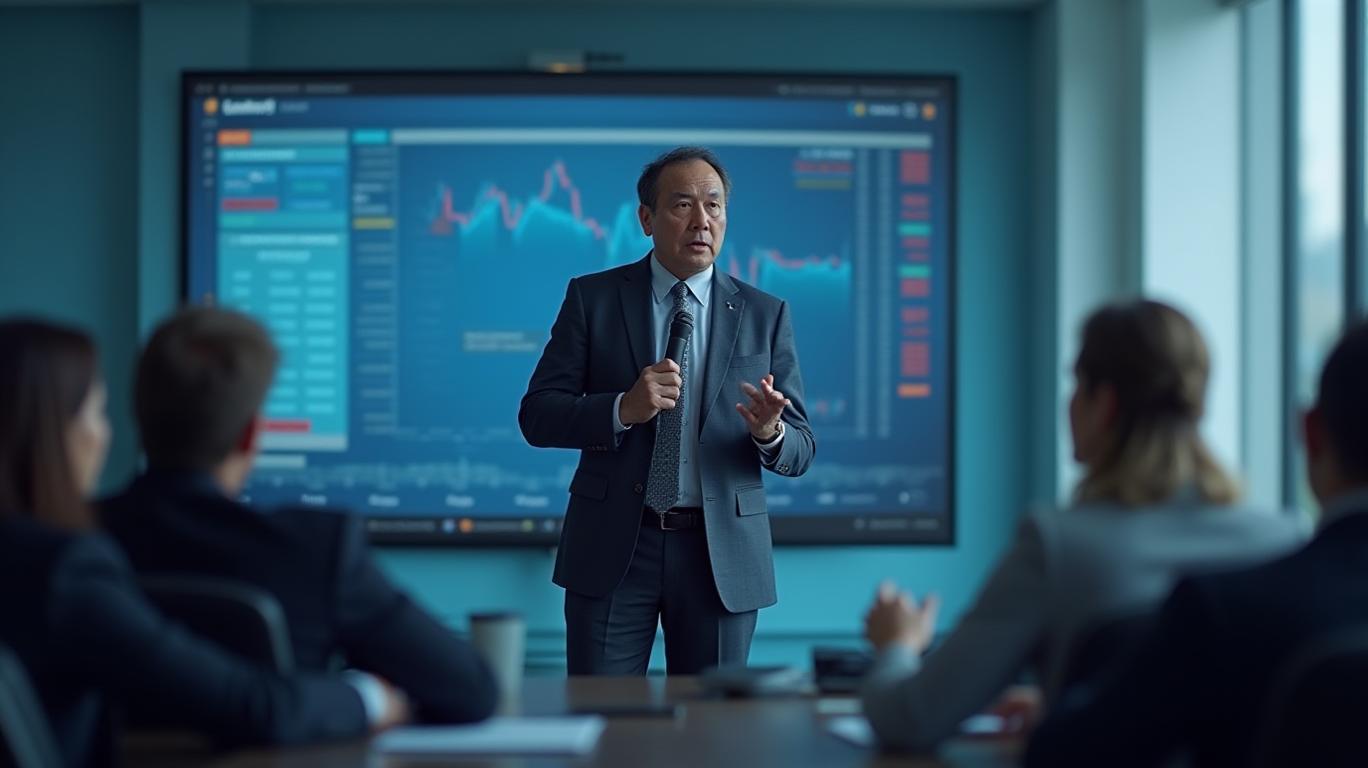U.S. Bancorp’s Q1 2025 Results Signal Resilience and Strategic Momentum
In a quarter marked by CEO Gunjan Kedia’s inaugural earnings call, U.S. Bancorp (USB) delivered a robust performance, exceeding expectations with diluted EPS of $1.03 and $6.96 billion in revenue, underscoring the bank’s ability to navigate macroeconomic headwinds while advancing its strategic priorities. The results, announced on April 16, 2025, reinforced the firm’s focus on disciplined expense management, organic growth, and capital returns, positioning it as a steady performer in an uncertain financial landscape.

Key Financial Highlights: Strength in Core Metrics
U.S. Bancorp’s Q1 2025 results demonstrated resilience across multiple dimensions:
- Profitability: EPS rose 14.4% year-over-year (YoY), driven by a 17.5% return on tangible common equity (ROTCE), a 300-basis-point improvement from Q1 2024.
- Revenue Growth: Total revenue increased 3.6% YoY to $6.96 billion, with fee income contributing 41% of net revenue, up from 38% a year earlier. This reflects progress in high-margin segments like payments (total purchase volume reached $925 billion TTM) and wealth management.
- Credit Quality: Nonperforming assets (NPA) declined to 0.45%, and net charge-offs (NCO) fell to 0.59%, signaling robust risk management amid rising interest rates.
- Efficiency: For the sixth consecutive quarter, noninterest expenses remained flat year-over-year, aided by real estate rationalization and AI-driven automation. This enabled an adjusted operating leverage of 270 basis points, a critical metric for profitability.
Strategic Priorities: A Blueprint for Sustainable Growth
Kedia and Stern emphasized three pillars guiding U.S. Bancorp’s medium-term strategy:
1. Expense Discipline: The bank reaffirmed its target of a mid-to-high 50s efficiency ratio by 2027, supported by cost-saving initiatives like technology modernization.
2. Fee Income Expansion: With payments revenue growing 5% YoY, the firm highlighted partnerships (e.g., Edward Jones) and digital platforms like Bank Smartly® as catalysts for mid-single-digit fee growth.
3. Balance Sheet Strength: Total assets rose to $676.5 billion, with deposits increasing 3% to $512.5 billion, reflecting strong customer retention. The bank’s $19.8 billion in capital exceeds regulatory requirements, allowing flexibility for dividends and buybacks.
Market Reaction and Valuation: A Path to Upside
The stock price rose 2% in after-hours trading following the results, signaling investor optimism. Over the past year, U.S. Bancorp’s shares have outperformed the broader market, with a 12-month return of 15% compared to the S&P 500’s 9%.
Analysts maintained a “Moderate Buy” consensus, with a price target of $65, implying a 18% upside from April 2025 levels. This aligns with the bank’s 1.15–1.35% ROA target for 2026–2027, which would place it among the sector leaders.
Challenges and Considerations
While the results are encouraging, risks persist. A potential economic slowdown could pressure loan demand and net interest margins. However, U.S. Bancorp’s diversified revenue streams and strong capital position mitigate these risks. The bank’s focus on fee income and cost controls also positions it to navigate rate volatility better than peers reliant on interest-sensitive assets.
Conclusion: A Steady Hand in an Uncertain Market
U.S. Bancorp’s Q1 2025 results underscore its status as a well-managed financial institution with a clear strategic roadmap. The 14.4% EPS growth, disciplined cost structure, and progress toward its efficiency and ROTCE targets suggest the bank is on track to deliver shareholder value. With a $10 billion share repurchase program and a dividend yield of 3.2%, USB offers both growth and income appeal.
The firm’s emphasis on technology-driven innovation, such as AI in operations and digital payments, further aligns it with the future of banking. As Kedia noted in the earnings call, “Our focus remains on executing against priorities that create long-term value.” For investors seeking stability in financials, U.S. Bancorp’s combination of resilience, strategic clarity, and upside potential makes it a compelling choice in 2025 and beyond.
This analysis synthesizes U.S. Bancorp’s financial performance, strategic initiatives, and market context, offering a roadmap for evaluating its investment merits in the current economic environment.










